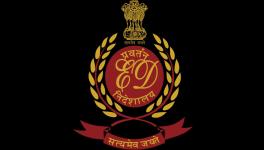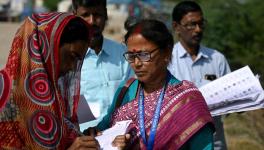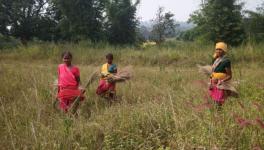Tribal Outfits Demand Religious Code in Census 2021, Plan Agitations
Representational use only.
Kolkata: The next two months are set to see phased agitations by tribal outfits to push their long-pending demand for a separate religious code in Census 2021.
So far, the Adivasis have been clubbed under the ‘others’ column in the census. While the format devised by the Registrar General of India (RGI) for Census 2021 have dropped ‘the others’ column, the tribals this time round will either have to skip the religious identity column or identify themselves as belonging to one of the six specified religions – Hindu, Muslim, Christian, Buddhist, Jain and Sikh.
This is just not acceptable to the Adivasis. They want the Union Home Ministry to ensure an opportunity for them to identify the religion they practise or the faith they strictly adhere to and thus, give them a distinct religious-cultural identity. Three outfits have been conducting agitations on this issue for several years. These are -- All India Bharatiya Adivasi Dharma Parishad (ADP), Rashtriya Adivasi Samaj Sarna Dharma Raksha Abhiyan (SDRA) – both Ranchi-based – and Adivasi Kudmi Samaj (AKS) based in West Bengal’s Purulia town. NewsClick spoke to leaders closely associated with the movement to understand what exactly they are demanding.
While the issues are largely the same, there are two demands for the same objective. The tribal organisations want a distinct religious or cultural identity which they are convinced will be a reality if a religious code is included in the Census format by the RGI. This would mean a total of eight specified religions against seven, including the ‘others’ column in the format for the previous Census. The SDRA and the AKS want ‘Sarna’ as the religious code. The AKS concentrates on West Bengal, Jharkhand, Odisha and Assam. On the other hand, the ADP wants a generic religious code ‘Adivasi / Tribal’ from an all-India perspective to be included and it has substantiated its case.
ADIVASIS NOT HINDU
Dr Karma Oraon, former professor of anthropology and dean, faculty of social science, in the Ranchi University, told NewsClick that the followers of ‘Sarna’ religious code believe in prayers to nature. Oraon is leading the agitation of the SDRA without holding any position in the organisation, which is focused on Jharkhand.
According to Oraon, the holy grail of their faith is ‘jal, jungle, zameen’ and the followers pray to the trees. ‘Sarna’ refers to sacred groves in the Indian religious traditions of the Chhota Nagpur plateau and the followers belong to the ethnic groups, such as, Khaira, Baiga, Ho, Kurukh, Munda, and Santal.
This outfit’s struggle received a shot in the arm on November 11, 2020, when the Jharkhand Assembly held a special session to adopt a resolution to support the demand for inclusion of ‘Sarna’ as a religious code. Jharkhand’s chief minister Hemant Soren went a step further and declared that “Adivasis were never Hindus nor they ever will be” at Harvard’s India Conference held in February last year. Adivasis are nature worshippers; their culture, religious rituals and lifestyles are entirely different from those of the Hindus, Soren had emphasised. Right-wing leaders, including some from the BJP, had disapproved of the Jharkhand CM’s views and criticised him.
PLANNING THE RESISTANCE
The SDRA has scheduled a meeting on November 11 to mark the first anniversary of the passage of the resolution by the Jharkhand Assembly. Thereafter, in mid-December at New Delhi’s Jantar Mantar, the organisation will hold a meeting of the ‘Sarna’ followers to press their demand for the inclusion of ‘Sarna’ as a religious code for Census 2021. The shape of further protests will be chalked out there, Oraon informed.
The ADP held a meeting on October 3 at New Delhi’s Gandhi Peace Foundation for a threadbare discussion among the key leaders on how to conduct the next phases of agitation. In support of its contention that it wants ‘adivasi / tribal’ as the religious code, the draft memorandum notes that India is home to about 781 types of janjatis and “the Adivasi community follows religious rituals and practises faith according to their beliefs and preferences. Among the ones being practised and followed are ‘Sarna’, ‘Sari’, ‘Aadi’, ‘Bidin’, ‘Virsait’, ‘Bhili’, ‘Gondi’, ‘Koyapunam’, ‘Aka’, ‘Safahor’, ‘Donyopolo’ and ‘Sanamahi’. Taken together, it can be said that adivasis follow ‘tribe religion’,” the ADP general secretary, Prem Sahi Munda pointed out.
Even the column ‘Others’ was misused and genuine Adivasis were enumerated under specified religions. As a result, their numbers showed “what we feel is an instance of engineered decline”. This resulted in curtailed provision and misuse of funds under tribal sub-plans in state budgets, Munda added. The organisation has veered round to the view that conversion has also been a factor behind the declining numbers. Therefore, it feels that there should be provision to deny benefits including reservation to Adivasi males and females who marry outside the community. Oraon too agreed that conversion was an issue in his state and elsewhere.
The draft memorandum demands the formation of an Adivasi religious justice board to protect the interest of this vulnerable community. The organisation has demanded from the Union government a five-acre land parcel in New Delhi where it will set up an Adivasi cultural promotion centre.
For firming up its future agitation strategy, its executive committee members and top leaders would meet in Nagpur on December 19. Depending upon the response it receives from the authorities, it may consider holding ‘dharnas’ from February next year.
Speaking to NewsClick, AKS chief advisor Ajit Prasad Mahto lamented that in the Census conducted during the British regime, the Adivasis were allotted religious code but “in our own regime we are still fighting to get religious code and those in vogue were withdrawn after Independence.” The codes provided during the British regime were: 1871 – Aborigines, 1881 – Aboriginal, 1891 – Aboriginal, 1901 – Animist, 1911 – Animist, !921 – Animist, 1931 – Tribal Religion, 1941 – Tribes and 1951 – Scheduled Tribe. According to reports, the 2011 Census had put the number of tribals at 50 lakhs in the country.
Notably, according to a New Delhi datelined PTI report of April 19, 2013, the Supreme Court had said that religious and customary rights of tribals should be protected, in addition to their individual and community rights, by the government while granting permission to mining companies to set up ventures in their areas. In an adjudication case, the Supreme Court rejected the contention of Odisha, which had cited Articles 25 and 26 of the Constitution, saying that the Forests Rights Act deals with individual and community rights of the tribals and “does not make any reference to the religious or spiritual rights protected under the Constitution.” The Supreme Court took the stand that Articles 25 and 26 guarantee them the right to practise and propagate “not only matters of faith or belief but also those rituals and observations which are regarded as integral part of their religion”. The three-judge Bench comprised Justices Aftab Alam, K S Radhakrishnan and Ranjan Gogoi.
Get the latest reports & analysis with people's perspective on Protests, movements & deep analytical videos, discussions of the current affairs in your Telegram app. Subscribe to NewsClick's Telegram channel & get Real-Time updates on stories, as they get published on our website.
























